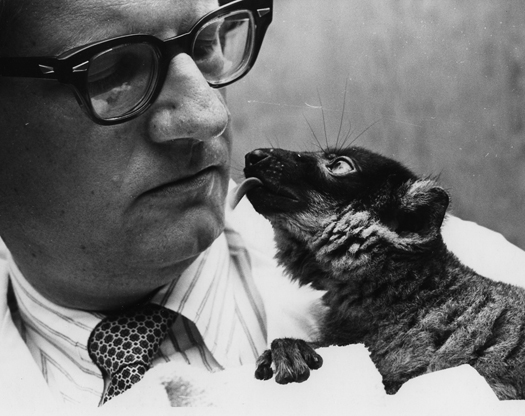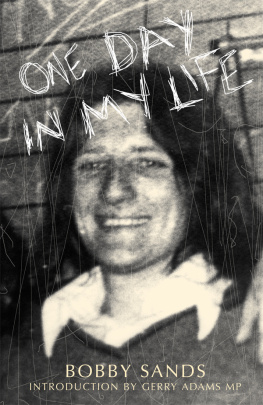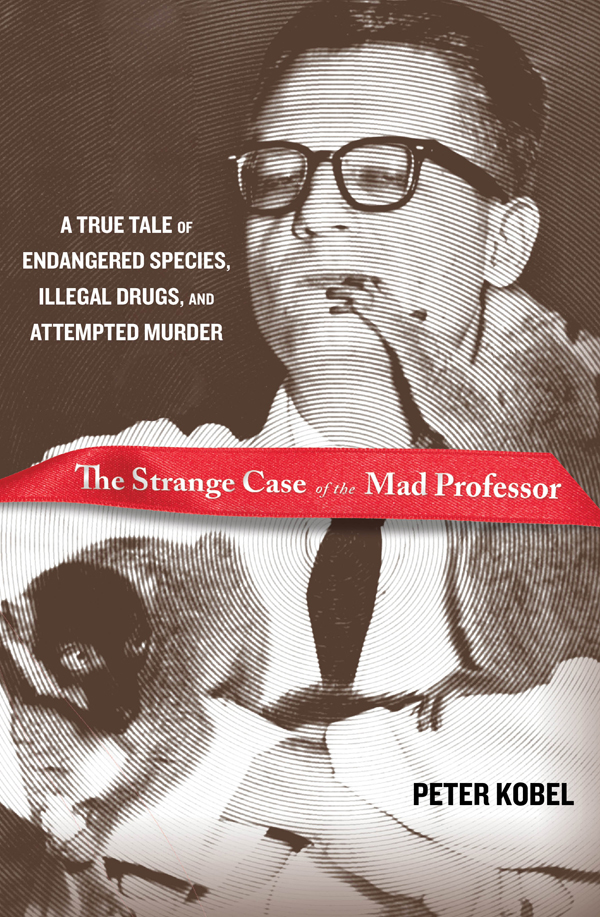T HE S TRANGE C ASE OF THE M AD P ROFESSOR

COURTESY OF DUKE UNIVERSITY ARCHIVES
T HE S TRANGE C ASE OF THE M AD P ROFESSOR
A True Tale of Endangered Species, Illegal Drugs, and Attempted Murder
P ETER K OBEL

LYONS PRESS
Guilford, Connecticut
An imprint of Globe Pequot Press
Copyright 2013 by Peter Kobel
The author has made all reasonable attempts to establish proper credit for all photographs contained herein. Any failure to credit or mistaken credit is purely incidental and unintentional.
All rights reserved. No part of this book may be reproduced or transmitted in any form by any means, electronic or mechanical, including photocopying and recording, or by any information storage and retrieval system, except as may be expressly permitted in writing from the publisher. Requests for permission should be addressed to Globe Pequot Press, Attn: Rights and Permissions Department, PO Box 480, Guilford, CT 06437.
Lyons Press is an imprint of Globe Pequot Press.
Project editors: Ellen Urban and Meredith Dias
Layout: Sue Murray
Library of Congress Cataloging-in-Publication Data
Kobel, Peter.
The strange case of the mad professor : a true tale of endangered
species, illegal drugs, and attempted murder / Peter Kobel.
pages cm
Includes bibliographical references and index.
ISBN 978-0-7627-9656-4
1. Buettner-Janusch, John, 1924- 2. MurderersUnited States. 3.
AnthropologistsUnited States. I. Title.
HV6248.B7717K63 2013
364.152'30973dc23
2013010261
F OR THE LEMURS OF M ADAGASCAR AND THOSE WHO STUDY THEM
I must warn the reader that facts are not hard, clear, and self-evident. They are not hard little objects that yield obvious conclusions and theories when a sufficient number are gathered, counted, sorted, and listed. Facts are elusive, and they are subject to much interpretation. Indeed, facts themselves are often the products of interpretations.... Facts do not speak for themselvesever.
J OHN Buettner-J ANUSCH , Origins of Man
Who is it that can tell me who I am?
W ILLIAM S HAKESPEARE , King Lear
C ONTENTS
I NTRODUCTION
I should say this, federal judge Joseph Lord said solemnly at the sentencing of former anthropology professor John Buettner-Janusch at the end of his 1987 trial. I have been on the bench now since September of 1961, which brings me very close to twenty-six years. In those twenty-six years, I dont know of any sentence that has caused me more difficulty, more thought than this one. Every sentence is difficult, but this one is of transcendent difficulty.
Buettner-Janusch was about to receive forty years in federal prison for the attempted murder of another federal judge, Charles Brieant. Seven years earlier, at the peak of his career, Buettner-Janusch had been convicted of turning his New York University laboratory into a drug factory. Judge Brieant had presided over the bitterly contested jury trial. The drug conviction destroyed Buettner-Januschs illustrious career, which had taken him from Yale to Duke to NYU. At the last of these, he served as chairman of the Anthropology Department.
Why Buettner-Janusch, a brilliant scientist, writer, and academic, committed these crimes remains an enigma. An enigmatic mandivisive, and himself dividedhe made enemies as easily and as often as friends. His fall from grace, his horrific attempt to kill a judge and the mans wife, as well as several others, gave pause even to a man such as Judge Lord, who had seen many crimes over the course of a quarter-century.
This is, then, a mystery story. It details Buettner-Januschs rise to the heights of the academic world of physical anthropology, and his precipitous decline. The story entails prestigious universities, scientific research, academic infighting, amateur sleuthing, illegal drugs, attempted murder, and, curiously but importantly, those most lovable of primates: lemurs.
Buettner-Janusch, one of the first scientists in the English-speaking world to begin studying lemurs seriously, began bringing them back to Yale from their native Madagascar in the early 1960s, and encouraged and inspired others to study them. He later took the prosimians, as they are known, with him to Duke, where he founded a primate facility, today the Duke Lemur Center, a crucible for research, conservation, and education that holds the largest collection of lemurs outside Madagascar.
The hugely successful DreamWorks Madagascar trilogy has made lemurs (who like to move it, move it) iconic in the imagination of Americans both young and young at heart, but these mostly endangered creatures have fascinated a small group of scientists, researchers, and conservationistslets call them lemuriansfor decades, often due to Buettner-Januschs influence. Anthropologist Alison Richard, who got the lemur bug from Buettner-Januschs Yale student Alison Jolly, said: Madagascar has been isolated for 80 million years, and it is, as Alison Jolly memorably wrote, as if time had broken its banks and flowed to the present by a different channel. So many life forms on the island, lemurs included, are unique and uniquely different from their relatives elsewhere. Studying the rule breakers is a good way of understanding the rules.
Not only did Buettner-Janusch inspire scientists to study Madagascar and its fauna, especially lemurs, but in their wake myriad conservation organizations began working to conserve species and their habitats there.
This is also a story about academia, where Buettner-Janusch spent his career as an educator, researcher, and, as chairman at NYU, a manager. As a manager, he was a natural disaster. Buettner-Janusch was peremptory, uncompromising, unpredictable, unreasonable, and arbitrary, said Peter Klopfer, cofounder with him of the Duke Lemur Center, who clashed with B-J, as he was known, and yet remained his friend and faithful correspondent until B-Js death in prison. As such, this book will also attempt to observe some of the rites and rituals conducted in the ivory tower. Buettner-Janusch wrote two highly regarded textbooks on physical anthropology, and nearly two hundred papers, essays, and book reviewseven while in prison. This book will also put his scientific research into perspective.
The difficult part for anyone attempting to tell Buettner-Januschs story, however, remains that the crimes inextricably intertwine with the science. The professor claimed that the drugs found in his NYU labLSD and methaqualone, the latter more commonly known as Quaaludebelonged to his research on modifying lemur behavior. Lemurs, his lasting legacy, and illegal drugs, his downfall, are linked forever. When Buettner-Janusch died in a federal prison hospital in 1992, his press obituaries inevitably led with his crimes. john buettner-janusch , 67, dies; n.y.u. professor poisoned candy , read the New York Times headline, and the headline for his obituary in Englands the Guardian summed up Buettner-Janusch succinctly: brilliant but flawed .
T HE S TRANGE C ASE OF THE M AD P ROFESSOR
Origins
The son of a successful architect, Johannes Buettner-Janusch was born in Chicago in the Roaring Twenties, a decade that roared more loudly in that city than anywhere else. The family may have moved to a small hamlet in northern Wisconsin in time for John to attend elementary and high school, but the Windy City had a profound effect on the sensitive boy. How could it not?










